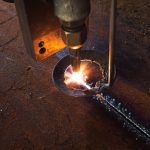The automotive industry is undergoing a revolution driven by artificial intelligence (AI). The integration of AI into manufacturing and management processes is transforming the way vehicles are built and operated, enhancing efficiency, quality, and safety across the production chain. At Wiinspect, we explain how to use artificial intelligence for process automation.
Automation in Manufacturing
Process automation in automotive manufacturing has been a key goal for decades. However, with advancements in AI, this goal has become more achievable than ever. AI-equipped robots can perform complex tasks with unprecedented precision and efficiency, from welding to component assembly.

AI is also used to optimize workflow on production lines. AI algorithms analyze real-time data to identify bottlenecks and make adjustments accordingly, resulting in smoother and more efficient production.
Quality Control
Another crucial aspect of AI integration in the automotive industry is quality control. Traditionally, quality inspection has been a manual and labor-intensive process. However, with AI, computer vision systems can detect defects with millimeter precision and at a much faster rate than traditional methods.
These computer vision systems use machine learning algorithms to analyze high-resolution images of components and assemblies, identifying any imperfections or anomalies and taking corrective actions immediately. This not only improves the final product quality but also reduces costs associated with rework and returns.
Supply Chain Management
Efficient supply chain management is crucial for the success of any automotive company. AI is playing an increasingly important role in this area by enabling more accurate planning and faster responses to market fluctuations.
AI algorithms analyze large volumes of historical and real-time data to predict the demand for components and materials, thereby optimizing inventory levels and reducing storage costs. Additionally, AI can identify potential risks in the supply chain, such as delivery delays or material shortages, allowing companies to take proactive measures to mitigate these risks.
The integration of artificial intelligence is transforming the automotive industry by automating manufacturing processes, improving quality control, and optimizing supply chain management. These advancements are not only increasing efficiency and reducing costs but also enhancing the quality and safety of the vehicles produced. As technology continues to advance, we can expect to see even more AI-driven innovations in the automotive industry in the coming years. Contact us for more information.






